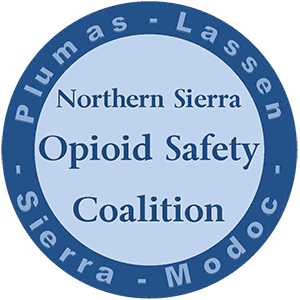WHAT IS NALOXONE (NARCAN)?
Drug overdose is the leading cause of unintentional injury or death in the United States, causing more deaths than motor vehicle crashes. Opioids – both prescription painkillers and heroin – are responsible for most of those deaths. Naloxone is a medication that works almost immediately to reverse opioid overdose. It has few adverse effects, no potential for abuse, and can be rapidly administered through intramuscular injection or nasal spray.
WHO CAN GIVE NALOXONE (NARCAN) ?
While most professional first responders and emergency departments are equipped with naloxone, emergency service providers may not arrive in time to revive overdose victims. Trained and equipped bystanders such as friends, family and other non-health care providers and drug users themselves can effectively respond and reverse an opioid overdose. Given the success of bystander naloxone programs, the CDC and the World Health Organization have recommended expanding the availability of naloxone to lay people.
Source: California Department of Public Health
NALOXONE (NARCAN) EFFECTS
Opioid overdoses result in the respiratory system slowing down to the point of not breathing – this usually takes time. With training and naloxone, lives may be saved!
- Naloxone only works for opioid overdoses and will not help with a stimulant overdose or alcohol overdose. If a combination of drugs was used including an opioid, naloxone should be administered – it may help.
- Naloxone has no psychoactive effects and does not present any potential for abuse. When administered in an overdose, opioid users may experience withdrawal symptoms until the naloxone wears off.
OPIOID OVERDOSE IS MOST COMMON WHEN:
- Tolerance is low after not using opioids (after jail or detox).
- Drugs are mixed especially with alcohol or benzos.
- Resistance is down due to sickness or other health issues.
- Using alone.
KNOW THE OVERDOSE SIGNS
- Unconscious/unresponsive
- Breathing slowly – or not at all; gurgling sound often heard
- Lips/fingernails blue
UNRESPONSIVE? WHAT TO DO
- Call 911 immediately. “I need help. I’m with someone who isn’t breathing” Provide the street address and location.
- If the person isn’t breathing, do Rescue Breathing.
- Make sure nothing is in the mouth.
- Tilt chin back and pinch nose.
- Give a slow, full breath every 5 seconds for 1 minute.
- Give naloxone. Naloxone needs time to work!
- Continue Rescue Breathing.
- Still unresponsive after 2 minutes? Give the second dose of naloxone using the same method as the first dose.
- Continue Rescue Breathing.
- Once breathing resumes, lay the person on their side in the recovery position, raising their knee to prevent them from rolling over, and place their arm under their head.
- Stay with them. This is important because the person that received naloxone might feel sick, and want to take another dose to feel better. Remind the person it will wear off soon, and doing more drugs could put them back in an overdose situation.
- If you aren’t going to stay on the scene for medical responders to arrive, leave doors unlocked and open.
You Can Save a Life
LEGAL PROTECTION
Laws are currently in place that support making naloxone more readily available.
California’s Good Samaritan Law
- California Civil Code Section 1714.22 (Statutes of 2013, Chapter 707, Sec. 1) (PDF) eliminates civil and criminal liability for: 1) licensed health care providers that prescribe naloxone and issue standing orders for the distribution of naloxone, and 2) individuals that administer naloxone to someone suspected of experiencing an overdose after receiving it along with required training. This law took effect on January 1, 2014.
Standing Order
- Modeled after San Francisco’s successful program, the coalition's regional overdose prevention program makes use of a standing order written by a physician that allows distribution of naloxone without an identified patient.
- This is similar to what schools do in order to have Epi-pens on hand to address acute allergic reactions.
LEARN MORE
California Department of Public Health: www.cdph.ca.gov/Programs/CCDPHP/DCDIC/SACB/Pages/NaloxoneGrantProgram.aspx#
Adapted from Ventura County Behavioral Health / www.venturacountyresponds.org
